August 18….Finally…we're starting the next chapter…..Vienna!!
We had a walking tour scheduled for that morning and, after Rod and Priscilla arrived at over, Rod was determined to give Uber another chance
. We got lucky this time as Adam, our ultimate Uber guy, showed up in his big, black van, complete with WiFi and cushy seats. Adam, not only restored our faith in the Uber system, but became our exclusive Uber guy for trips to the airport and wherever else we needed him to take us.
We met our tour guide, Herbert, at the Hofburg Imperial Palace, built in the 13th century and expanded in the centuries since. We were a little late and Herbert was not happy about it and was pretty grumpy but, after a bit, he loosened up and became quite pleasant, interesting, and even a little humorous.
Our tour started with a walk through the outer areas of the Palace, part of which forms the official winter residence and workplace of the President of Austria. Through the centuries, the palace has housed some of the most powerful people in European and Austrian history, including monarchs of the Habsburg dynasty who were rulers of the Austro-Hungarian Empire. According to Herbert, the Palace has 2,600 rooms, 150 wings, 150 courtyards and sits on 131 acres. Boy, I sure wouldn’t want to be in charge of cleaning this place. After WWI they started renting out some of the 1 bedroom apartments and, today, a 750 square foot apartment goes for about 600 euros. Pretty pricey to live in the Imperial Palace.
He, then, gave us an overview of what is contained in the Palace, one of the most famous being the Spanish Riding School
. A traditional riding school for Lipizzan horses, it’s the oldest of its kind in the world, dating back to the Hapsburg Monarchy in 1572. Not only is it a center for classical dressage, the headquarters is a tourist attraction that offers public performances as well as permitting public viewing of some training sessions.
A few statistics….Vienna, the capital and largest city of Austria, is its primary city, with a population of about 1.8 million, which is nearly one third of Austria’s population. Vienna is also the cultural, economic, and political center of Austria and, until the beginning of the 20th century, it was the largest German-speaking city in the world. Today, it has the second largest number of German speakers after Berlin and in 2001 the city center was designated as a UNESCO World Heritage Site.
Vienna is well known for having played an essential role as a leading European music center, from the great age of Viennese Classicism through the early part of the 20th century and is often regarded as the "City of Music" because of this musical legacy
. It’s also said to be “The City of Dreams” because it was home to the world’s first psycho-analyst, Sigmund Freud.
Evidence has been found of continuous habitation of Vienna since 500 BC, when the site on the Danube River was settled by the Celts. In 15 BC, the Romans fortified the frontier city to guard the empire against Germanic tribes to the north. Like the other two countries we had visited, Austria has had a long, fascinating and complicated history, worthy of studying and, today, over 3.7 million tourists visit the historic center of Vienna to marvel at this magnificent city with its Baroque castles and gardens and the late-19th century Ringstrabe, lined with grand buildings, monument and parks.
Hector walked us by many of the historic sites and gave us a little history of each of them. He walked us by the most notable museums that he recommended we visit, the famous and beautiful Opera House and a very powerful and controversial sculpture, that’s part of the Memorial against War and Facism, called the Kneeling Jew
. In the book, “The Texture of Memory,” the author refers to the statue as “The Street Washing Jew”, and explains that, after Auschwitz, local Jews were sent through the streets to scrub anti-Nazi graffiti off the buildings and cobblestones. With this statue, the sculpture, Alfred Hrdlicka, accuses those who stood by and did nothing.
We ended our tour at St. Stephen’s Cathedral, more commonly known as the Mother Church of the Roman Catholic Archdiocese of Vienna and the seat of the Archbishop of Vienna. The current Romanesque and Gothic form of the cathedral stands on the ruins of two earlier churches, the first a parish church consecrated in 1147. It’s the most important religious building in Vienna and, with its multi-colored tile roof, has become one of the city’s most recognizable symbols.
After our tour, we got a bite to eat at one of the chic looking, and unbelievably expensive, cafés on the wide and bustling boulevard and, then, did a little window shopping, admiring the beautiful and pricey window displays
. Afterwards, we called our trusted Uber Guy, Adam, who arrived within minutes to take us to the hotel where Rod and Priscilla were staying. We stocked up on groceries for the week, at the market next to their hotel and, then, headed back to the apartment, which was really quite lovely and comfortable, relaxed a little, then made a tasty dinner of Kielbasa, fries and salad. After playing a heated card game (Bill and I take our favorite games with us whenever we travel) we all retired as we had a lot of sightseeing planned for the next day.
FINALLY IN A NEW COUNTRY
Thursday, August 18, 2016
 Vienna, Vienna, Austria
Vienna, Vienna, Austria
Other Entries
-
6OUR SMORREBROD COOKING LESSON
Aug 0117 days prior Copenhagen, Denmarkphoto_camera12videocam 0comment 6
Copenhagen, Denmarkphoto_camera12videocam 0comment 6 -
7HAMLET'S CASTLE
Aug 0216 days prior Copenhagen, Denmarkphoto_camera33videocam 0comment 6
Copenhagen, Denmarkphoto_camera33videocam 0comment 6 -
8FINAL DAY IN COPENHAGEN
Aug 0315 days prior Copenhagen, Denmarkphoto_camera41videocam 0comment 8
Copenhagen, Denmarkphoto_camera41videocam 0comment 8 -
9OUR ACCOMODATIONS WEREN'T QUITE WHAT WE EXPECTED
Aug 0414 days prior Prague, Czech Republicphoto_camera19videocam 0comment 4
Prague, Czech Republicphoto_camera19videocam 0comment 4 -
10MORE WALKING TOURS & EXPLORING
Aug 0513 days prior Prague, Czech Republicphoto_camera19videocam 0comment 3
Prague, Czech Republicphoto_camera19videocam 0comment 3 -
11WALKING TOUR OF PRAGUE CASTLE
Aug 0612 days prior Prague, Czech Republicphoto_camera22videocam 0comment 3
Prague, Czech Republicphoto_camera22videocam 0comment 3 -
12CRAFTS FAIR AND MUCHA MUSEUM
Aug 0711 days prior Prague, Czech Republicphoto_camera27videocam 0comment 6
Prague, Czech Republicphoto_camera27videocam 0comment 6 -
13JEWISH QUARTER WALKING TOUR
Aug 0810 days prior Prague, Czech Republicphoto_camera30videocam 0comment 2
Prague, Czech Republicphoto_camera30videocam 0comment 2 -
14EXCURSION TO CESKY KRUMLOV
Aug 099 days prior Prague, Czech Republicphoto_camera21videocam 0comment 2
Prague, Czech Republicphoto_camera21videocam 0comment 2 -
15CESKY KRUMLOV CASTLE & LAST SUPPER IN PRAGUE
Aug 099 days prior Prague, Czech Republicphoto_camera22videocam 0comment 9
Prague, Czech Republicphoto_camera22videocam 0comment 9 -
16A FEW FINAL PHOTOS
Aug 108 days prior Prague, Czech Republicphoto_camera19videocam 0comment 6
Prague, Czech Republicphoto_camera19videocam 0comment 6 -
17WE WELCOMED THE CHANGE OF PACE
Aug 108 days prior Horní Polubný, Czech Republicphoto_camera32videocam 0comment 4
Horní Polubný, Czech Republicphoto_camera32videocam 0comment 4 -
18THE GLASS FACTORY AND CROSSING INTO POLAND
Aug 126 days prior Horní Polubný, Czech Republicphoto_camera17videocam 0comment 0
Horní Polubný, Czech Republicphoto_camera17videocam 0comment 0 -
19POLAND AND BACK...FOR REAL
Aug 135 days prior Karpacz, Polandphoto_camera23videocam 0comment 7
Karpacz, Polandphoto_camera23videocam 0comment 7 -
20OFF ON ANOTHER DAY EXCURSION TO LIBEREC
Aug 144 days prior Liberec, Czech Republicphoto_camera33videocam 0comment 11
Liberec, Czech Republicphoto_camera33videocam 0comment 11 -
21VISITING THE ROCK CASTLES
Aug 153 days prior Malá Skála, Czech Republicphoto_camera40videocam 0comment 3
Malá Skála, Czech Republicphoto_camera40videocam 0comment 3 -
22GOODBYE TO HORNI POLUBNY AND OFF TO VENICE
Aug 162 days prior Prague, Czech Republicphoto_camera27videocam 0comment 0
Prague, Czech Republicphoto_camera27videocam 0comment 0 -
23FINALLY IN A NEW COUNTRY
Aug 18 Vienna, Austriaphoto_camera24videocam 0comment 4
Vienna, Austriaphoto_camera24videocam 0comment 4 -
24ALBERTINA, SCHONBRUNN AND THE FABULOUS ZOO
Aug 191 day later Vienna, Austriaphoto_camera29videocam 1comment 3
Vienna, Austriaphoto_camera29videocam 1comment 3 -
25SO MUCH TO SEE AND DO....AND IT'S PAM'S BIRTHDAY
Aug 202 days later Vienna, Austriaphoto_camera46videocam 0comment 1
Vienna, Austriaphoto_camera46videocam 0comment 1 -
26MORE SIGHTS TO SEE ON ROD'S BIRTHDAY
Aug 213 days later Vienna, Austriaphoto_camera24videocam 0comment 0
Vienna, Austriaphoto_camera24videocam 0comment 0 -
27OUR FINAL FULL DAY IN VIENNA
Aug 224 days later Vienna, Austriaphoto_camera16videocam 0comment 1
Vienna, Austriaphoto_camera16videocam 0comment 1 -
28A NEW ADVENTURE....A NEW COUNTRY
Aug 235 days later Yastrebets, Russian Federationphoto_camera47videocam 1comment 1
Yastrebets, Russian Federationphoto_camera47videocam 1comment 1 -
29NOW WE'RE IN ROMANIA...WE SURE GET AROUND
Aug 268 days later Brasov, Romaniaphoto_camera22videocam 0comment 4
Brasov, Romaniaphoto_camera22videocam 0comment 4 -
30WALKING TOUR IN BRASOV
Aug 279 days later Brasov, Romaniaphoto_camera18videocam 0comment 0
Brasov, Romaniaphoto_camera18videocam 0comment 0 -
31ALL I CAN SAY IS.....BIZARRE
Aug 2810 days later Sacele, Romaniaphoto_camera18videocam 0comment 2
Sacele, Romaniaphoto_camera18videocam 0comment 2 -
32PHOTO JOURNAL OF OUR SACELE HOME EXCHANGE
Aug 2911 days later Săcele, Romaniaphoto_camera18videocam 0comment 5
Săcele, Romaniaphoto_camera18videocam 0comment 5 -
33VISITING THE LOVELY TOWN OF SINAIA
Aug 3012 days later Sinaia, Romaniaphoto_camera26videocam 0comment 1
Sinaia, Romaniaphoto_camera26videocam 0comment 1 -
34OCTOBERFEST, SIGHISOARA THEN THE BLACK SEA
Aug 3113 days later Sighisoara, Romaniaphoto_camera39videocam 0comment 3
Sighisoara, Romaniaphoto_camera39videocam 0comment 3 -
35ANOTHER COUNTRY, ANOTHER HOME EXCHANGE
Sep 0215 days later Kosharitsa, Bulgariaphoto_camera29videocam 0comment 2
Kosharitsa, Bulgariaphoto_camera29videocam 0comment 2 -
36THE ENCHANTING VILLAGE OF SOZOPOL
Sep 0417 days later Sozopol, Bulgariaphoto_camera34videocam 0comment 4
Sozopol, Bulgariaphoto_camera34videocam 0comment 4 -
37WE'RE ON OUR OWN
Sep 0619 days later Sveti Vlas, Bulgariaphoto_camera12videocam 0comment 2
Sveti Vlas, Bulgariaphoto_camera12videocam 0comment 2 -
38LAST FEW DAYS IN EASTERN EUROPE
Sep 0720 days later Sveti Vlas, Bulgariaphoto_camera21videocam 0comment 6
Sveti Vlas, Bulgariaphoto_camera21videocam 0comment 6 -
39MYSTERY OF THE MISSING LUGGAGE
Sep 1023 days later Istanbul, Turkeyphoto_camera5videocam 0comment 1
Istanbul, Turkeyphoto_camera5videocam 0comment 1 -
40SENSORY OVERLOAD
Sep 1124 days later Istanbul, Turkeyphoto_camera31videocam 0comment 9
Istanbul, Turkeyphoto_camera31videocam 0comment 9 -
41TAKSIM SQUARE AND THE POTATO SEARCH
Sep 1225 days later Istanbul, Turkeyphoto_camera34videocam 0comment 3
Istanbul, Turkeyphoto_camera34videocam 0comment 3

 Vienna, Vienna, Austria
Vienna, Vienna, Austria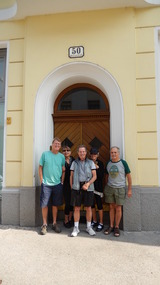
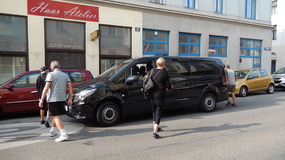
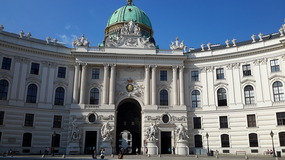
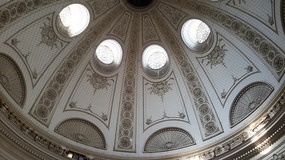
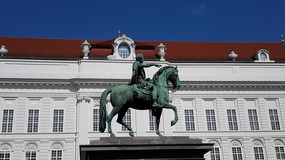











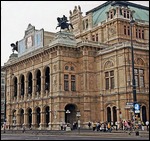




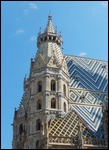









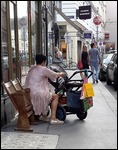
2025-05-22